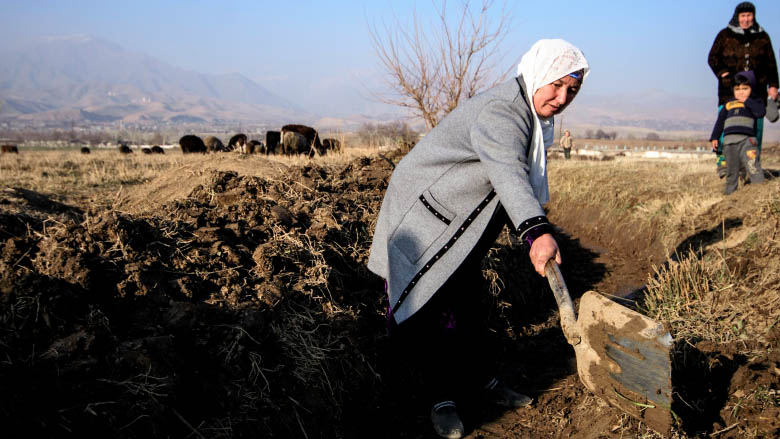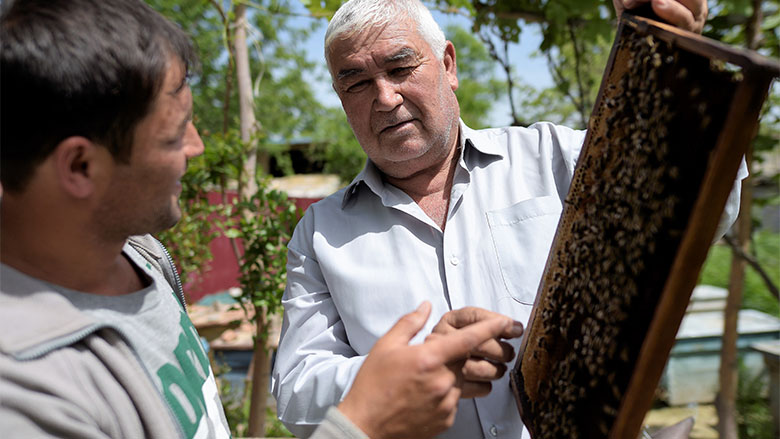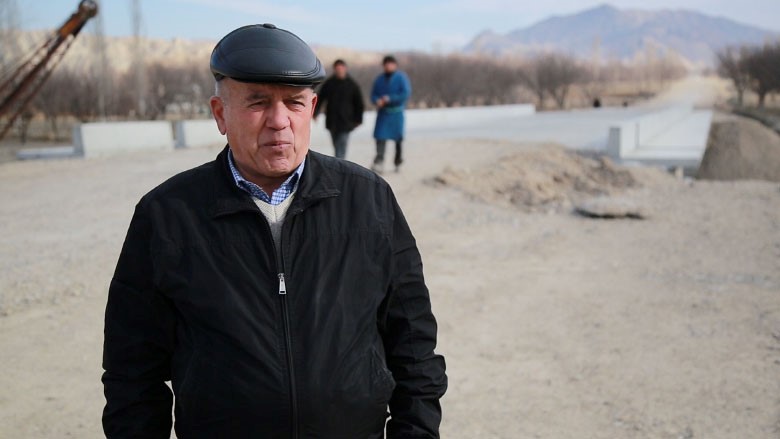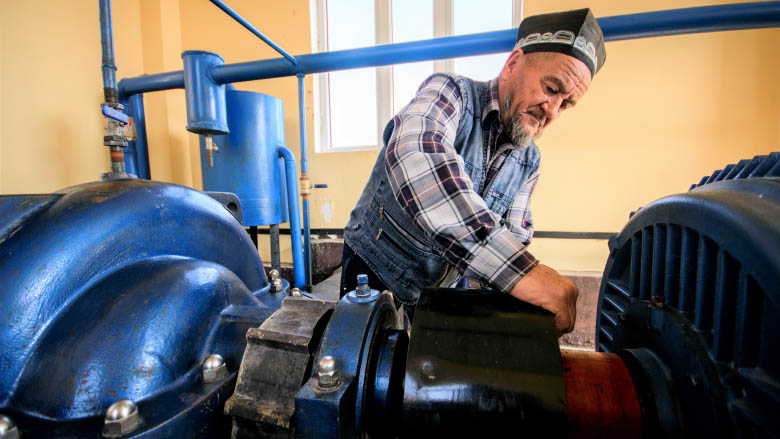Challenge
Tajikistan needs to address three key challenges for sustainable development and growth:
Inadequate public services and limited connectivity: Landlocked and largely mountainous, Tajikistan is the most isolated country in Central Asia. The availability and accessibility of energy, water, and roads are obstructed by high mountain ranges, especially in winter. New economic opportunities from (a) important public infrastructure investments and (b) recently established connections with promising neighboring markets have only recently emerged.
Persistent poverty and lost potential: With a population approaching 9 million (about half below age 24) and a GNI per capita of $1,100 in 2016, Tajikistan is also the poorest country in Central Asia, with significant regional variations of poverty. About 13 percent of the population experiences sustained poverty, and the country faces social and economic risks from high (youth) unemployment and border spillovers from Afghanistan. According to the 2019 Human Capital Index, a child born in Tajikistan today will be only 53 percent as productive as s/he could be with adequate education and health care. More than 20 percent of children under age five are stunted.
Weak private sector: Tajikistan’s private sector remains underdeveloped and plays a limited role in the economy, which has not undergone the same structural transformation as in other former USSR countries. Many state-owned enterprises continue to play a critical role in the economy and they are operational despite their economic inefficiency. Tajikistan’s Doing Business ranking (2019) is the lowest in the Europe and Central Asia region (126th out of 190). Economic reforms to create a strong and diverse private sector better oriented toward exports, including financial sector and tax reforms, are essential for growth and domestic job creation.
Approach
For Tajikistan, emerging commercial opportunities from regional integration offer a huge potential for medium- to long-term economic growth, provided (a) the private sector is given opportunities to grow and expand; (b) critical connectivity infrastructure (electricity, roads, water, and eventually digital) is in place and functional; (c) people benefit from good human capital endowments, including adequate health, education and employment opportunities and live in empowered, resilient communities able to cope constructively with the challenges of transformative change; and (d) effective and efficient public institutions are able to lead and manage the necessary policy changes.
The current and future World Bank portfolio in Tajikistan therefore has a strong focus on connectivity, notably for energy and roads, and also includes interventions in rural development, health and water services, (higher) education, and early childhood development. Other interventions will address constraints in the country’s business environment, specifically the tax regime, promote a robust financial sector, and focus on strengthening the relevant public institutions.
Results
The Bank supported an assessment of the Rogun hydropower plant (HPP), following industry best practices, and concluded that the hydro facility could create jobs and enhance the prosperity of Tajikistan’s population, if adequately embedded into a broader reform agenda. The ongoing Nurek HPP Rehabilitation Project has started improving the plant’s generating capacity and efficiency and strengthening the safety of the Nurek dam. The project’s technical assistance component helped the energy utility (Barqi Tojik) improve its financial situation (15 percent tariff increase was introduced in October 2018).
Between 2014 and 2018, with IDA support:
- Dushanbe Water Supply Project helped improve access to water supply and sanitation, and the introduction of residential water metering and customer billing and collection systems benefited over 96,000 households (895,000 people).
- Central-Asia Road (CARs-2) program helped rehabilitate critical border-crossing points (BCPs) in Sughd oblast, which carries 40 percent of overall freight turnover, increasing links to the Kyrgyz Republic and Uzbekistan and expanding trade competitiveness opportunities:
- Kuckkak-Kim-Isfara-Guliston BCP to Kyrgyz Republic opened in June 2018 (45.1 km)
- Dehmoi-Proletarsk-Madaniyat BCP to Kyrgyz Republic, including link to the intermodal rail terminal in Proletarsk, opened in October 2018 (16.9 km)
- In higher education, the intake of girls increased by 10 percent and of rural students by 40 percent. Since early 2016, 1,900 students (54 percent female) have been enrolled in short-term courses or programs developed in response to labor market demand.
- In basic primary health care, 15 health facilities in select districts have been completed and 328 Primary Health Centers equipped. 450 health facilities in selected districts are adopting performance-based financing, increasing the percentages of pregnant women receiving proper antenatal care at least four times in project districts: in Sughd from 79.2 percent (2014) to 97.7 percent (2018), in Khatlon from 39.2 to 97.4 percent, and in Districts of Republican Subordination from 78.7 to 99.8 percent.
- The Environmental Land Management and Rural Livelihoods Project (closed May 2018) reached roughly 324,00 people, largely through small- and large-scale grants to households and farmers, increasing their productive assets and socioeconomic position. The project provided $11.32 million in investments to improve rural production and land resource management and supported 53,390 households in adopting climate change and sustainable land management practices. According to a project completion study, 53 percent of households participating in the project, in the lowlands and uplands, improved their well-being by 25 percent on average (compared to 46 percent for non-participating households).
- The time required to register a business was reduced from 24 days (2012) to five days (2017); e-filing for taxes has gained traction and is used now by 77.8 percent of registered individual entrepreneurs.
World Bank Group Contribution
The investment program of the International Finance Corporation (IFC) supports the financial, telecommunications, hydropower, retail, tourism, and manufacturing sectors of the economy. IFC has also supported the country’s largest cellular phone operator “Tcell” with $30 million for capital investment in telecom infrastructure and service expansion. In 2018, IFC invested $2 million to support the growth of a leading local food distribution company.
Over half of IFC’s active portfolio in Tajikistan covers the financial sector, supporting local institutions in expanding their lending to micro and small entrepreneurs. IFC’s advisory services helped establish a credit reporting system from scratch, including a private credit bureau, enabling about 575,000 individuals and micro and small enterprises gain access to finance totaling $288 million.
A new payment systems law, adopted in 2017 with IFC advisory support, brought 6,400 previously unbanked customers into the formal financial sector; transactions through 5,000 new mobile wallets reached $28,000. Advisory services for the management of nonperforming loans (NPLs), in combination with strong enforcement mechanisms and a robust credit reporting system, led to a reduction of NPLs from 54 percent (2016) to 32 percent (end-2018) and improved capitalization in the banking sector.
In the business environment, IFC supported the Government in developing a new Inspections Law and ensuring proper implementation of inspections reform, leading to a reduction in the number of inspectorates from 31 to 25, a 36 percent decrease in the number of inspections, and a 14 percent decline in the time spent inspecting a business in 2017. An electronic permitting system—e-Permit—was launched in June 2016 in two pilot ministries with IFC support.
Partners
The World Bank Group (WBG) in Tajikistan is an important member of the donor community that includes both the traditional Development Assistance Committee (DAC) and non-traditional emerging donors, including Russia and China, all of which are members of the Development Coordination Council (DCC) that has been in place since 2009. The WBG uses its convening power and successfully mobilizes resources from diverse partners to implement many projects, including in such priority sectors as energy (Central Asia-South Asia Regional Electricity Transmission and Trade Project [CASA-1000]; Nurek HPP Rehabilitation Project), rural development and irrigation (Second Public Employment for Sustainable Agriculture and Water Resources Management Project), and health care and education (supported by the Governments of Japan and Russia).
The World Bank has maintained a close partnership and is coordinating its efforts closely with key donors, including the Asian Development Bank, the Asian Infrastructure Development Bank, the European Union, the UK’s Department for International Development, and the Swiss State Secretariat for Economic Affairs, partly in co-financing arrangements and partly to create synergies for ongoing and envisaged interventions. The World Bank is also currently chairing the DCC in Tajikistan. In addition to development partners, the WBG works closely with a number of local partners, non-governmental organizations, and civil society organizations.
Moving Forward
A new WBG Country Partnership Framework (CPF) for the period of FY19–23 is currently under preparation. The proposed CPF aims to support Tajikistan’s efforts to seize a window of opportunity that has recently opened, thanks to a combination of regional transformation and good government decisions on public investments, to develop a comprehensive reform agenda supporting the country’s transformation to a private sector–led and export-oriented economic growth model, while addressing emerging risks.
In line with the WBG’s twin goals of reducing poverty and boosting shared prosperity, as well as the Tajikistan National Development Strategy 2030, the proposed CPF will aim to foster formal private sector development and employment and focus on three major pillars: (i) investing in people and strengthening social cohesion; (ii) improving the effectiveness of public institutions; and (iii) fostering investments and exports, with a cross-cutting emphasis on tackling the country’s fragility challenges. The WBG will provide financing and will engage in policy dialogue to support the three priority areas. Climate change activities will be cross-cutting and the program emphasize gender-sensitive approaches and seek to apply the WBG’s Maximizing Finance for Development principles.
Beneficiaries

Rozigul Yusupova, from Lolazor village, Vahdat district. She is from one of 120 households that now have enough water to irrigate their crops as a result of the Second Public Employment for Sustainable Agriculture and Water Resources Management Project (PAMP-II).
“We used to fight for water. Some neighbors would divert water, as not enough was coming to the village,” says Rozigul. “We came together as a community and jointly resolved the most pressing issue we were facing—the lack of water.”

Habibullo Mahmadulloev, resident of the remote Farkhor district, on the Afghanistan border. Habibullo recently expanded his apiary, thanks to financing from the Environmental Land Management and Rural Livelihoods Project, and has passed on his knowledge of beekeeping to 24 village residents.
“It is amazing to see how the Carpathian breed of bees, which we purchased thanks to the project, are better adapted to the cold winter season,” says Habibullo. “Previously, the bees were inactive and slept through the winter; it was not good for our business.”

Yokubjon Mamajonov, head of the Kalachai Mazor community, northern Isfara district. Yokubjon says that his village is better protected from natural disasters, thanks to the Second Phase of the Central Asia Road Links Program – CARs-2.
“This village was in the lowland, so it was flooded frequently in the past years. We did not have any protection, people’s homes were flooded, the streets were flooded. So, thanks to the efforts of the World Bank and the Ministry of Transport, we now have a great flood protection infrastructure, and people feel more protected from natural disasters.”
More than 10 million residents of the Ferghana Valley and more than 3 million people in other areas of the Kyrgyz Republic and Tajikistan will benefit from improved road connectivity and thus better market access across borders thanks to the Central Asia Road Links Program.
